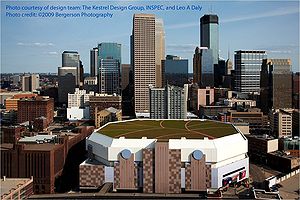
Difference between revisions of "Green roofs"
m |
m |
||
| (4 intermediate revisions by the same user not shown) | |||
| Line 24: | Line 24: | ||
<!--*[[Construction observations for green roofs]]--> | <!--*[[Construction observations for green roofs]]--> | ||
*[[Assessing the performance of green roofs]] | *[[Assessing the performance of green roofs]] | ||
| − | *[[Operation and maintenance of green roofs]] | + | *[[Operation and maintenance (O&M) of green roofs]] |
| + | *[[Operation and maintenance of green roofs - supplemental information]] | ||
| + | **[[Operation and maintenance of green roofs]] - we recommend using the above two pages | ||
*[[Calculating credits for green roofs]] | *[[Calculating credits for green roofs]] | ||
*[[Cost-benefit considerations for green roofs]] | *[[Cost-benefit considerations for green roofs]] | ||
| Line 36: | Line 38: | ||
*[[Green roof fact sheet]] | *[[Green roof fact sheet]] | ||
*[[Requirements, recommendations and information for using green roofs as a BMP in the MIDS calculator]] | *[[Requirements, recommendations and information for using green roofs as a BMP in the MIDS calculator]] | ||
| − | |||
| − | |||
| − | |||
| − | |||
<noinclude> | <noinclude> | ||
| − | [[Category:Green roof | + | [[Category:Level 3 - Best management practices/Structural practices/Green roof]] |
| − | |||
</noinclude> | </noinclude> | ||
Latest revision as of 22:41, 3 December 2022
Information: The Minnesota Green Roofs Council has a new database of green roofs in Minnesota
Green Infrastructure: Green roofs consist of a series of layers that create an environment suitable for plant growth without damaging the underlying roof system. Green roofs create green space for public benefit, energy efficiency, and stormwater retention/ detention.
Information: Green roofs can be particularly effective stormwater Best Management Practices in ultra-urban settings.
Green roofs typically occur at the beginning of stormwater treatment trains. Green roofs provide filtering of suspended solids and pollutants associated with those solids, although total suspended solid (TSS) concentrations from traditional roofs are generally low. Green roofs provide both volume and rate control, thus decreasing the stormwater volume being delivered to downstream Best Management Practices (BMPs).
- For a literature review of green roof benefits, see File:Green roof benefits.docx.
- The full contents of the green roofs section are contained within a pdf document. To access the pdf, link to: File:Green roofs.pdf
- The individual articles comprising this section on green roofs may be viewed as a single article. Note: Due to an unresolved bug, when viewing a formula in a combined article, the math markup (used for equations) is displayed.
A listing of contributors and participants to the development of pages comprising the green roof section of this Manual appears in the Acknowledgements section.
- Overview for green roofs
- Types of green roofs
- Design criteria for green roofs
- Construction specifications for green roofs
- Assessing the performance of green roofs
- Operation and maintenance (O&M) of green roofs
- Operation and maintenance of green roofs - supplemental information
- Operation and maintenance of green roofs - we recommend using the above two pages
- Calculating credits for green roofs
- Cost-benefit considerations for green roofs
- Plant lists for green roofs
- Case studies for green roofs
- Links for green roofs
- References for green roofs
- Supporting material for green roofs
- Green roofs terminology and glossary
- Green roof fact sheet
- Requirements, recommendations and information for using green roofs as a BMP in the MIDS calculator
This page was last edited on 3 December 2022, at 22:41.

